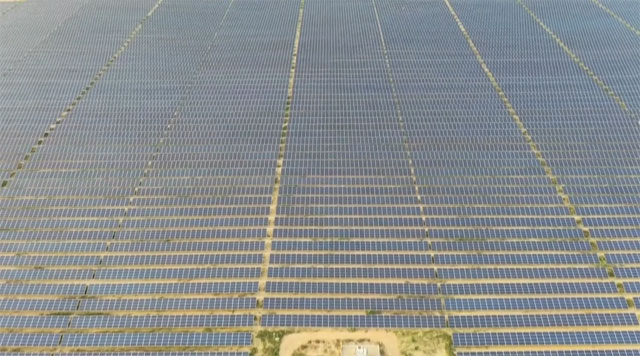India turns the desert into a solar 'oasis'
Once a vast desert area, Bhadla Park in Rajasthan now has a completely different look thanks to millions of solar panels.
Bhadla Solar Park in the Thar Desert of India. (Video: AFP)
Rajasthan in western India is the largest state by area but is very sparsely populated, as much of the territory is arid desert with an average of 325 sunny days per year. However, the authorities have turned these harsh conditions to their advantage for the country's solar power revolution.
Today, an estimated 10 million solar panels have been installed on the edge of the Thar desert , creating an oasis - Bhadla park - as far as the eye can see. This is one of the largest solar parks in the world, showing how rapid change can be brought about by technology, innovation, public and private finance.
India with 1.3 billion people is expected to soon overtake China to become the most populous country in the world, which means increasing energy demand. Today, coal power still accounts for 70% of the country's electricity production, making them one of the top emitters of greenhouse gases.

About 10 million solar panels have been installed on the edge of the Thar desert.
Although green energy in India has grown fivefold in just over a decade to 100 GW this year, the sector still needs further growth to achieve its climate targets. Queen.
At the ongoing COP26 conference in Glasgow, Prime Minister Narendra Modi pledged that India will increase its non-fossil energy capacity to 500 GW and that by 2030, 50% of the country's energy needs will come from renewable sources. renewables such as wind and solar power.
"I believe this is an aspirational goal, to show the world we are on the right track," expert Vinay Rustagi from India's renewable energy consulting firm Bridge told AFP .
According to the International Energy Agency (IEA), over the next two decades, India must add an electricity system the size of Europe to meet the needs of its growing population.
However, reshaping the entire power grid takes a lot of time and money. About 80% of India's solar cells today are still imported from China, the world's largest producer. In his speech at COP26, Prime Minister Modi expected developed countries to provide the necessary financial support for the country to achieve its goals.
- The $ 50 trillion plan turns the Earth desert into millions of oases
- Underground oasis under the world's driest desert
- 'Miracle' in the town located in the world's most arid desert
- Inside a 2,000 year old oasis in the desert of China
- Surprise with oases filled with trees and shade between the Sahara desert
- Discover an oasis of more than 3.5 billion years on Mars once had life?
- The lake covered the desert 650,000km2 after a tropical storm
- Build miniature solar system in the desert
- Desert destroyed: the dark side of the solar manufacturing industry?
- Lake water 2000 years strange between arid desert
- Detecting an oasis suspected to contain alien fossils
- New Roman tombs discovered in Dakhla Oasis, Egypt
 The US company is about to build a supersonic passenger plane of 6,000km / h
The US company is about to build a supersonic passenger plane of 6,000km / h Japan develops avatar robot as in fiction film
Japan develops avatar robot as in fiction film Australia tested the world's first mango picking robot
Australia tested the world's first mango picking robot America develops technology to separate water from animal waste
America develops technology to separate water from animal waste